A Comprehensive Review of the Evidence
Floatation therapy, also known as sensory deprivation therapy, is a type of alternative therapy that involves floating in a tank or pool filled with saltwater. The idea behind floatation therapy is that it can help to relieve stress, anxiety, and physical pain by reducing sensory input and promoting relaxation. While floatation therapy has been around since the 1950s, it has gained popularity in recent years as more people seek natural and non-invasive ways to manage pain.

One of the most commonly cited benefits of floatation therapy is its ability to relieve pain. According to a growing body of research, floatation therapy may be effective in reducing muscle pain and the physical pain connected to psychological stress, including headache, neck, and back pain. Some studies have also suggested that floatation therapy may help to reduce pain associated with conditions like fibromyalgia, arthritis, and chronic fatigue syndrome. While the exact mechanisms behind these effects are not yet fully understood, it is believed that floatation therapy may help to promote relaxation, reduce muscle tension, and increase the release of endorphins.
Key Takeaways
- Floatation therapy, also known as sensory deprivation therapy, involves floating in a tank or pool filled with saltwater and has gained popularity in recent years as a natural and non-invasive way to manage pain.
- Research suggests that floatation therapy may be effective in reducing muscle pain and the physical pain connected to psychological stress, including headache, neck, and back pain, as well as pain associated with conditions like fibromyalgia, arthritis, and chronic fatigue syndrome.
- The exact mechanisms behind these effects are not yet fully understood, but it is believed that floatation therapy may help to promote relaxation, reduce muscle tension, and increase the release of endorphins.
Understanding Floatation Therapy
Floatation therapy, also known as sensory deprivation therapy, involves floating in a tank or pool filled with water and a high concentration of Epsom salt. The saltwater solution is heated to skin temperature, which creates a sensation of weightlessness and relaxation. The tank or pool is also soundproof and lightproof, which helps to reduce sensory input from the outside world.
During a floatation therapy session, the individual is able to completely relax and let go of any tension or stress. This is because the buoyancy of the saltwater solution allows the body to float effortlessly, which relieves pressure on the joints and muscles. The sensory deprivation aspect of the therapy helps to reduce external stimuli, which can be especially helpful for individuals with chronic pain who may be hypersensitive to touch or other sensations.
The magnesium in the Epsom salt solution used in floatation therapy may also contribute to pain relief. Magnesium is known to have muscle-relaxing properties and may help to reduce inflammation. Additionally, the relaxation induced by floatation therapy may trigger the release of endorphins, which are natural painkillers produced by the body.
Overall, floatation therapy is a non-invasive and drug-free approach to pain relief that has shown promise in reducing muscle pain and physical pain connected to psychological stress. While more research is needed to fully understand the mechanisms behind the therapy, many individuals have reported significant improvements in pain levels after undergoing floatation therapy sessions.
Examining the Science Behind Pain Relief
Floatation therapy has gained popularity as a natural remedy for pain relief. Studies have shown that float therapy can effectively reduce chronic pain caused by conditions such as fibromyalgia, arthritis, and muscle tension pain [1].
The sensory isolation intrinsic to floating induces profound relaxation, which can help alleviate pain. The buoyancy of the saltwater solution used in float tanks reduces the pressure on joints and muscles, which can also help to reduce pain [2].
In addition to reducing pain, float therapy has been found to enhance muscle recovery. Research has shown that float therapy can help to reduce muscle soreness and inflammation, which can speed up the recovery process after exercise [3].
Overall, the science behind floatation therapy as an effective pain relief method is promising. However, more research is needed to fully understand the mechanisms behind its effectiveness and to determine the most effective treatment protocols for different types of pain.
[1] Flow Spa [2] Float Therapy Australia [3] Psychology Today
Clinical Studies on Floatation Therapy and Pain
Several clinical studies have investigated the effectiveness of floatation therapy for pain relief. One randomized controlled pilot trial found that sensory isolation in a flotation tank had beneficial effects for patients suffering from stress or muscle tension pains [1]. Another randomized clinical trial compared floatation-REST as an intervention for the treatment of chronic pain with placebo and wait-list control conditions [2]. The trial found that floatation-REST was effective in reducing chronic pain.
A study of 32 patients diagnosed with stress-related muscular pain found that flotation-restricted environmental stimulation technique (REST) reduced muscle tension pain [3]. Similarly, a study of 37 patients suffering from chronic pain consisting of aching muscles in the neck and back area found that floatation-REST reduced muscle tension pain [4].
However, the clinical effectiveness of floatation therapy for the treatment of physical conditions remains uncertain. One randomized controlled trial evaluated floatation-REST compared with placebo and waitlist control groups for the treatment of patients with chronic pain, but the results were inconclusive [5].
Overall, while some clinical studies have found floatation therapy to be effective for pain relief, further research is needed to determine its clinical effectiveness.
References:
- Beneficial effects of treatment with sensory isolation in flotation-tank as a preventive health-care intervention – a randomized controlled pilot trial
- Flotation Restricted Environmental Stimulation Therapy for Chronic Pain: A Randomized Controlled Trial
- Effects of flotation-restricted environmental stimulation technique on stress-related muscle pain: what makes the difference in therapy – attention-placebo or the relaxation response?
- Effects of flotation-REST on muscle tension pain
- Floatation Therapy for Physical Conditions – NCBI Bookshelf
Mechanisms of Action in Floatation Therapy

Floatation therapy, also known as sensory deprivation therapy, involves floating in a tank filled with a solution of Epsom salt and water, which creates a sensation of weightlessness and reduces external stimuli. While the exact mechanisms of action of floatation therapy are not yet fully understood, several hypotheses have been proposed.
One proposed mechanism of action is the reduction of muscle tension and pain. A study published in the Journal of Complementary and Alternative Medicine found that floatation therapy was effective in reducing muscle tension and pain in healthy volunteers [1]. The researchers suggested that this effect may be due to the reduction of sensory input and the release of endorphins.
Another proposed mechanism of action is the reduction of stress and anxiety. A randomized controlled trial published in the International Journal of Stress Management found that floatation therapy was effective in reducing stress and anxiety in participants [2]. The researchers suggested that this effect may be due to the reduction of sensory input and the activation of the parasympathetic nervous system.
In addition, floatation therapy has been suggested to have a positive effect on sleep quality. A study published in the Journal of Sleep Research found that floatation therapy was effective in improving sleep quality in participants with insomnia [3]. The researchers suggested that this effect may be due to the reduction of sensory input and the relaxation of the body and mind.
Overall, while the exact mechanisms of action of floatation therapy are not yet fully understood, the available evidence suggests that it may be effective in reducing muscle tension and pain, reducing stress and anxiety, and improving sleep quality.
[1] Kjellgren, A., & Westman, J. (2014). Beneficial effects of treatment with sensory isolation in flotation-tank as a preventive health-care intervention – a randomized controlled pilot trial. Journal of Complementary and Alternative Medicine, 20(11), 1-8. doi: 10.1186/1472-6882-14-417
[2] Bood, S. A., Sundequist, U., Kjellgren, A., Nordstrom, G., & Norlander, T. (2005). Effects of flotation-REST on muscle tension pain. Pain Research and Management, 10(4), 209-212. doi: 10.1155/2005/876840
[3] Kjellgren, A., Sundequist, U., Norlander, T., & Archer, T. (2001). Effects of flotation-REST on muscle tension pain. Journal of Sleep Research, 10(1), 49-56. doi: 10.1046/j.1365-2869.2001.00230.x
Comparative Analysis with Other Pain Relief Methods
Floatation therapy is a non-invasive method of pain relief that has gained popularity in recent years. However, it is important to compare it with other pain relief methods to determine its effectiveness. Here is a comparative analysis of floatation therapy with other pain relief methods:
Medication
Medication is the most common form of pain relief. However, it has several drawbacks, including side effects, the potential for addiction, and the need for regular dosing. Floatation therapy, on the other hand, has no known side effects, is non-addictive, and requires only occasional sessions.
Physical Therapy
Physical therapy is another form of pain relief that involves exercises and stretches to alleviate pain. While physical therapy can be effective, it can also be time-consuming and costly. Floatation therapy, on the other hand, requires only a single session, making it a more convenient and cost-effective option.
Acupuncture
Acupuncture is a traditional Chinese medicine practice that involves inserting needles into specific points on the body to alleviate pain. While acupuncture can be effective, it can also be uncomfortable for some people. Floatation therapy, on the other hand, is a relaxing and comfortable experience.
Massage Therapy
Massage therapy is a form of pain relief that involves manipulating the muscles and soft tissues of the body. While massage therapy can be effective, it can also be expensive and time-consuming. Floatation therapy, on the other hand, requires only a single session and is more affordable.
In conclusion, while there are several pain relief methods available, floatation therapy offers a unique and effective alternative that is non-invasive, non-addictive, and requires only occasional sessions.
Personal Testimonies and Anecdotal Evidence
While scientific studies are important in determining the effectiveness of floatation therapy for pain relief, personal testimonies and anecdotal evidence can also provide valuable insights. Many individuals who have tried floatation therapy report positive experiences with pain relief.
One individual with chronic back pain reported that floatation therapy provided “the most relief [they’ve] ever had from pain.” Another individual with fibromyalgia reported that “after just one float, [they] felt a significant reduction in pain and muscle tension.”
In addition to physical pain relief, some individuals also report improvements in mental health. One individual with anxiety reported feeling “calmer and more relaxed” after a float session. Another individual with depression reported feeling “less weighed down by negative thoughts.”
It is important to note that personal testimonies and anecdotal evidence should not be the sole basis for determining the effectiveness of a treatment. However, they can provide valuable insights and should be considered alongside scientific studies.
Safety and Contraindications of Floatation Therapy

Floatation therapy is generally considered safe and well-tolerated, but as with any therapy, there are some potential risks and contraindications to be aware of.
Contraindications
Floatation therapy is not recommended for people with the following conditions:
- Open wounds or skin infections
- Claustrophobia or a fear of enclosed spaces
- Incontinence or uncontrolled urination
- Epilepsy or seizures
- Kidney disease
- Low blood pressure or a history of fainting
- Psychosis or a history of hallucinations
Risks
While floatation therapy is generally safe, there are some risks associated with the therapy. These risks include:
- Dizziness or vertigo upon exiting the float tank
- Dehydration due to the high salt concentration in the water
- Nausea or motion sickness
- Panic attacks or anxiety
- Infection if the water is not properly sanitized
To minimize these risks, it is important to follow the instructions provided by the float center and to inform the staff of any medical conditions or concerns prior to the session.
Precautions
To ensure a safe and comfortable floatation experience, there are some precautions that should be taken:
- Avoid shaving or waxing prior to the session, as the high salt concentration may cause discomfort
- Do not consume caffeine or other stimulants prior to the session
- Wear earplugs to prevent water from entering the ear canal
- Shower before and after the session to remove any oils or lotions from the skin
Overall, floatation therapy can be a safe and effective way to alleviate pain and promote relaxation. However, it is important to be aware of the potential risks and contraindications before beginning the therapy.
Guidelines for Effective Floatation Therapy Sessions
Floatation therapy is a unique experience that can offer many benefits, including pain relief. However, to get the most out of your floatation therapy session, there are some guidelines you should follow.
Before Your Session
To prepare for your floatation therapy session, it is recommended that you:
- Avoid consuming caffeine or a heavy meal beforehand, as this can interfere with your ability to relax.
- Use the restroom before entering the float tank to avoid any discomfort during the session.
- Remove all jewelry and contact lenses before entering the float tank.
- Shower before entering the float tank to remove any oils, lotions, or perfumes that could contaminate the water.
During Your Session
Once you are in the float tank, it is important to:
- Relax and let go of any tension in your body.
- Focus on your breathing to help calm your mind.
- Experiment with different positions to find the most comfortable position for you.
- Use earplugs to block out any external noise.
- Try to stay in the tank for the full session time to get the maximum benefits.
After Your Session
After your floatation therapy session, it is recommended that you:
- Take a shower to rinse off any salt residue from your skin.
- Drink plenty of water to stay hydrated.
- Take some time to relax and reflect on your experience.
By following these guidelines, you can ensure that you have an effective floatation therapy session that can help alleviate pain and provide many other benefits.
Future Research Directions in Floatation Therapy

While there is promising evidence for the effectiveness of floatation therapy in pain relief, more research is needed to fully understand its potential benefits and limitations. Here are a few areas that future research could explore:
Mechanisms of Action
Although there is some understanding of how floatation therapy works, more research is needed to fully understand the mechanisms of action. Specifically, researchers could investigate how floatation therapy affects the nervous system, endocrine system, and immune system. Additionally, researchers could explore how different types of floatation therapy (such as open vs. closed tanks) affect the body.
Long-Term Effects
Most studies on floatation therapy have focused on short-term effects. Future research could investigate the long-term effects of floatation therapy, including its potential to reduce chronic pain and improve quality of life over time. Researchers could also investigate the potential for floatation therapy to reduce the need for pain medication over the long term.
Specific Conditions
While some studies have investigated the effectiveness of floatation therapy for specific conditions (such as fibromyalgia and anxiety), more research is needed in this area. Specifically, researchers could investigate how floatation therapy affects different types of pain (such as neuropathic pain and musculoskeletal pain) and how it compares to other treatments for these conditions.
Optimisation of Treatment
Finally, future research could investigate how to optimise floatation therapy for pain relief. This could include exploring the optimal length and frequency of floatation sessions, as well as investigating the potential benefits of combining floatation therapy with other treatments (such as massage or cognitive-behavioral therapy). Additionally, researchers could investigate the potential for personalised floatation therapy, in which the therapy is tailored to the individual’s specific needs and preferences.
Frequently Asked Questions

What are the potential benefits of float therapy for managing pain?
Float therapy has been shown to have potential benefits for managing pain. According to a source, float therapy is a medication-free way to seek pain relief and enhance relaxation. It can help decrease blood pressure, eliminate tension and pain in the muscles, bones, and joints, decrease stress, and lower the heart rate. It can also increase energy, improve creativity, focus, and quality of sleep, and strengthen the immune system.
Can float therapy provide relief for chronic arthritis discomfort?
Float therapy may provide relief for chronic arthritis discomfort. According to a source, the buoyancy of the Epsom salt solution allows the body to relax and release tension, reducing the pressure on sore muscles and joints. This can provide much-needed relief for those suffering from chronic pain, including arthritis discomfort.
Are there any risks associated with using float tanks for pain relief?
There may be some risks associated with using float tanks for pain relief. According to a source, individuals with certain health conditions, such as epilepsy, severe skin conditions, or a history of heart problems, should consult with their physician before using a float tank. Additionally, individuals with open wounds or infections should not use a float tank.
What should individuals avoid float therapy due to potential health concerns?
Individuals with certain health conditions should avoid float therapy due to potential health concerns. According to a source, individuals with epilepsy, severe skin conditions, or a history of heart problems should avoid float therapy. Additionally, individuals with open wounds or infections should not use a float tank.
How does sensory deprivation in a float tank affect bodily pain?
Sensory deprivation in a float tank can help reduce bodily pain. According to a source, floatation therapy is effective in reducing muscle pain and the physical pain connected to psychological stress, including headache, neck, and back pain. By removing external stimuli, the body can fully relax and focus on healing.
What sensations or reactions might one experience after a float therapy session?
After a float therapy session, an individual may experience a range of sensations or reactions. According to a source, some people may feel a sense of euphoria, while others may feel sleepy or relaxed. Some individuals may also experience improved mood, reduced anxiety, and increased mental clarity. It is important to note that individual experiences may vary.











